This article was co-authored by Lydia Shedlofsky, DO. Dr. Lydia Shedlofsky is a Resident Dermatologist who joined Affiliated Dermatology in July of 2019 after completing a traditional rotating internship at Larkin Community Hospital in Miami, Florida. She earned a Bachelor of Science in Biology at Guilford College in Greensboro, North Carolina. After graduation, she moved to Beira, Mozambique, and worked as a research assistant and intern at a free clinic. She completed a Post-Baccalaureate program and subsequently earned a Master's Degree in Medical Education and a Doctorate of Osteopathic Medicine (DO) from the Lake Erie College of Osteopathic Medicine.
There are 14 references cited in this article, which can be found at the bottom of the page.
wikiHow marks an article as reader-approved once it receives enough positive feedback. This article has 19 testimonials from our readers, earning it our reader-approved status.
This article has been viewed 2,134,781 times.
Scabies is a common and persistent skin condition that causes intense itching. It is caused by the human itch mite, Sarcoptes scabiei, which burrows under the skin.[1] Scabies is easily caught through skin-to-skin contact with affected people and can spread rapidly in crowded conditions. The itching is caused by your body's allergic reaction to the mites, their waste, and the eggs they lay under your skin. Small red bumps and blisters will form on the skin above each mite and turn itchy as a result of this reaction. Scabies is highly contagious, but you can quell the itching by killing these pests and get your life back to normal.
Steps
Getting Treatment
-
1Recognize the signs of scabies. Any case of severe itching that lasts weeks or months could result from scabies.[2] Signs of scabies include:
- Intense itching, especially at night.[3]
- Small red bumps (they may be pimple-like) appear on the skin like a rash. The rash can be on the whole body or limited to certain areas. Common places include the wrist, armpit, elbow between fingers, genital area, waist, and beltline. The rash can also have small blisters.[4]
- Small burrow lines between the bumps. They are typically light gray and slightly raised.[5]
- Norwegian scabies, or "crusted scabies," is a particularly severe form. Signs of crusted scabies include thick crusts on the skin that crumble easily and may appear greyish. They contain hundreds of thousands of mites and eggs.[6] Crusted scabies is rare and typically seen in patients with suppressed immune systems
- Be particularly vigilant of these symptoms if you have been in contact with anyone infected with scabies.
-
2Visit the doctor. It is important that you visit your doctor. Over-the-counter and home remedies will not treat the infestation completely.[7] [8]
- The doctor will usually only need to see the rash to diagnose the condition. He might also take a sample by scraping under the bumps and looking for the presence of mites, eggs, and feces under the microscope.
- Be sure to tell your doctor if you are pregnant or have any problems such as serious illness, or other severe skin diseases.
- Everyone that has come into contact with a patient diagnosed with scabies should also be evaluated by a doctor.[9]
Advertisement -
3Treat the itch yourself while you wait. If your itching is severe, you may want to treat it on your own while waiting for your doctor's appointment or prescription. Soaking in cold water or applying calamine lotion may provide relief from itching.[10] You can also use over-the-counter oral antihistamines, such as cetirizine (Zyrtec), diphenhydramine hydrochloride (Benadryl).
-
4Get a prescription. Once diagnosed, your doctor will usually prescribe a mite-killing cream or lotion containing five percent Permethrin. Always follow your doctor's and pharmacist's instructions exactly when using the cream.
- Permethrin is topically applied and has a few side effects such as burning/stinging and itching.[11]
- Permethrin only kills mites and not ova (eggs), so a second application is necessary for treatment. Two applications at least one week apart (this is how long it takes an egg to hatch) is the minimum treatment required to make sure it is eradicated.
- For people with a severe infestation and weakened immune system, doctors may prescribe Ivermectin as an oral treatment. Ivermectin is an oral medication. It is generally used for crusted scabies and taken as a single one-time dose. Some doctors may prescribe a second dose after one week. Side effects of Ivermectin include fever/chills, headache, loss of appetite, joint pain and rash.[12]
- Your doctor may prescribe other creams instead of the Permethrin. These include Crotamiton 10%, Lindane 1%, or sulfur 6%. These are less common, and are used if a patient has failed treatment with Permethrin or Ivermectin. Treatment failure is frequent with Crotamiton. Side effects of Crotamiton include rash and itching. Lindane is toxic if overused or misused. Side effects of Lindane include seizures, and rash.[13]
-
5Ask about herbal remedies. Several herbs are traditionally used for treating scabies. There is little proof that these remedies are effective — most evidence is anecdotal, or people saying they were helpful, but there is no scientifically backed evidence to support their use. Currently the only proven remedy is prescription medication. Do not rely on these treatments alone. Talk to your doctor before trying any herbal remedies, including the following:
Treating Your Scabies
-
1Shower and towel-dry your body using a fresh, clean towel. Wait a while for your body to cool down some from the shower before applying your medication.[19]
-
2Apply the prescription cream or lotion. Unless a medical professional advised you otherwise, start behind the ears and from the jawline and work your way down. Apply using cotton wool swabs, a paintbrush, a sponge, or any item supplied with the treatment for the purpose.
- Continue rubbing the cream downward, over your entire body.[20] Avoid the eyes, nose, and mouth area, but apply everywhere else. You must cover your genitals, soles of your feet, between your toes, back, and buttocks. Get help for areas you're not able to reach yourself.
- After covering your body, take care of your hands. Apply between the fingers and under your nails. You will need to reapply the cream to your hands every time you wash them.
-
3Wait. Leave the lotion or oil on your body for the amount of time directed. This is usually between eight to 24 hours.[21]
- The length of time you'll need to leave the medication on your skin will depend on the product and your doctor's instructions.
-
4Shower off the cream or lotion. Once the allotted time is up, wash off the medication under a warm shower.[22] Be aware that you may remain itchy for a few weeks after the treatment.
- This is because your allergic reaction to the mites continues while the dead mites bodies remain in the skin. If it's concerning you, speak with your doctor again.
-
5Treat everyone in the house. All household members need treatment on the same day, even if they aren't showing signs of scabies. This will prevent reinfestation.[23]
- Don't forget visitors to your house. This includes family members staying for any length of time, babysitters, and other visitors.
-
6Repeat as directed. The cream is usually one application with a repeat application after seven days. But, this will depend on your doctor or pharmacist's instructions. Be sure to follow the prescription.
Avoiding Reinfestation
-
1Clean the house. To prevent reinfestation after treatment, it's vital to thoroughly clean your home the same day you applied the treatment. A scabies mite can live for one to three days off the body.[26] Cleaning will ensure that remaining mites are killed.
- Disinfect the floor and bathroom surfaces by mopping (you only need to do this after the first treatment).
- Vacuum floors, carpets, and rugs. Dispose of the bag or contents in an outside trash can immediately and dispose of as quickly as possible.[27]
- Bleach the mop after each clean.
- If you can steam clean the carpet.
-
2Wash all towels and bedding in hot water. Wash bedding daily until you’ve not seen new bumps for at least a week.[28] Wear disposable gloves when stripping beds.
- If you have a heavy comforter, you can place it in an airtight bag for 72 hours.[29]
- Dry clothing and bedding in a hot dryer or on the clothesline in hot weather under direct sunlight. Dry cleaning is also appropriate.
- Put blankets in the dryer before bed every night until you're certain the infestation has ceased.
-
3Wash your clothes daily. Store clothes that you cannot wash in the airtight bag for 72 hours to one week.[30]
- The same approach will work for stuffed animals, brushes, combs, shoes, coats, gloves, hats, robes, wetsuits, etc. Vacuum bags are widely available that are airtight and take up little space.
- Bag all clothing the moment you remove it.
-
4Reassess after six weeks. If you're still itching after six weeks, this can indicate that the treatment has not worked. See your doctor for more advice and new treatment options.
Expert Q&A
Did you know you can get premium answers for this article?
Unlock premium answers by supporting wikiHow
-
QuestionHow do you treat scabies at home?
 Lydia Shedlofsky, DODr. Lydia Shedlofsky is a Resident Dermatologist who joined Affiliated Dermatology in July of 2019 after completing a traditional rotating internship at Larkin Community Hospital in Miami, Florida. She earned a Bachelor of Science in Biology at Guilford College in Greensboro, North Carolina. After graduation, she moved to Beira, Mozambique, and worked as a research assistant and intern at a free clinic. She completed a Post-Baccalaureate program and subsequently earned a Master's Degree in Medical Education and a Doctorate of Osteopathic Medicine (DO) from the Lake Erie College of Osteopathic Medicine.
Lydia Shedlofsky, DODr. Lydia Shedlofsky is a Resident Dermatologist who joined Affiliated Dermatology in July of 2019 after completing a traditional rotating internship at Larkin Community Hospital in Miami, Florida. She earned a Bachelor of Science in Biology at Guilford College in Greensboro, North Carolina. After graduation, she moved to Beira, Mozambique, and worked as a research assistant and intern at a free clinic. She completed a Post-Baccalaureate program and subsequently earned a Master's Degree in Medical Education and a Doctorate of Osteopathic Medicine (DO) from the Lake Erie College of Osteopathic Medicine.
Dermatologist
-
QuestionWhat do you do if you have been around someone with scabies?
 Lydia Shedlofsky, DODr. Lydia Shedlofsky is a Resident Dermatologist who joined Affiliated Dermatology in July of 2019 after completing a traditional rotating internship at Larkin Community Hospital in Miami, Florida. She earned a Bachelor of Science in Biology at Guilford College in Greensboro, North Carolina. After graduation, she moved to Beira, Mozambique, and worked as a research assistant and intern at a free clinic. She completed a Post-Baccalaureate program and subsequently earned a Master's Degree in Medical Education and a Doctorate of Osteopathic Medicine (DO) from the Lake Erie College of Osteopathic Medicine.
Lydia Shedlofsky, DODr. Lydia Shedlofsky is a Resident Dermatologist who joined Affiliated Dermatology in July of 2019 after completing a traditional rotating internship at Larkin Community Hospital in Miami, Florida. She earned a Bachelor of Science in Biology at Guilford College in Greensboro, North Carolina. After graduation, she moved to Beira, Mozambique, and worked as a research assistant and intern at a free clinic. She completed a Post-Baccalaureate program and subsequently earned a Master's Degree in Medical Education and a Doctorate of Osteopathic Medicine (DO) from the Lake Erie College of Osteopathic Medicine.
Dermatologist
-
QuestionHow do people get scabies?
 Lydia Shedlofsky, DODr. Lydia Shedlofsky is a Resident Dermatologist who joined Affiliated Dermatology in July of 2019 after completing a traditional rotating internship at Larkin Community Hospital in Miami, Florida. She earned a Bachelor of Science in Biology at Guilford College in Greensboro, North Carolina. After graduation, she moved to Beira, Mozambique, and worked as a research assistant and intern at a free clinic. She completed a Post-Baccalaureate program and subsequently earned a Master's Degree in Medical Education and a Doctorate of Osteopathic Medicine (DO) from the Lake Erie College of Osteopathic Medicine.
Lydia Shedlofsky, DODr. Lydia Shedlofsky is a Resident Dermatologist who joined Affiliated Dermatology in July of 2019 after completing a traditional rotating internship at Larkin Community Hospital in Miami, Florida. She earned a Bachelor of Science in Biology at Guilford College in Greensboro, North Carolina. After graduation, she moved to Beira, Mozambique, and worked as a research assistant and intern at a free clinic. She completed a Post-Baccalaureate program and subsequently earned a Master's Degree in Medical Education and a Doctorate of Osteopathic Medicine (DO) from the Lake Erie College of Osteopathic Medicine.
Dermatologist
Warnings
- Do not keep applying the scabies medicine if you continue to itch. Consult your doctor or pharmacist for advice and help.⧼thumbs_response⧽
- Unless your doctor advises, avoid using steroids or corticosteroids. You should not use these to combat itching, as they can potentially spread the infection by weakening your immune system.⧼thumbs_response⧽
References
- ↑ Lydia Shedlofsky, DO. Dermatologist. Expert Interview. 30 September 2020.
- ↑ http://www.mayoclinic.org/diseases-conditions/scabies/basics/definition/CON-20023488?
- ↑ http://www.mayoclinic.org/diseases-conditions/scabies/basics/symptoms/con-20023488
- ↑ http://www.cdc.gov/parasites/scabies/gen_info/faqs.html
- ↑ http://www.cdc.gov/parasites/scabies/gen_info/faqs.html#signs
- ↑ https://www.aad.org/public/diseases/contagious-skin-diseases/scabies
- ↑ Lydia Shedlofsky, DO. Dermatologist. Expert Interview. 30 September 2020.
- ↑ http://www.mayoclinic.org/diseases-conditions/scabies/basics/symptoms/con-20023488
- ↑ Lydia Shedlofsky, DO. Dermatologist. Expert Interview. 30 September 2020.
- ↑ http://www.mayoclinic.org/diseases-conditions/scabies/basics/definition/CON-20023488?
- ↑ http://reference.medscape.com/drug/nix-elimite-permethrin-topical-343503#4
- ↑ http://www.aafp.org/afp/2003/0915/p1089.html
- ↑ http://emedicine.medscape.com/article/1109204-medication
- ↑ http://www.ncbi.nlm.nih.gov/pmc/articles/PMC3931201/
- ↑ http://www.thelancet.com/journals/lancet/article/PIIS0140-6736(06)68772-2/fulltext
- ↑ http://link.springer.com/chapter/10.1007/978-1-62703-167-7_44
- ↑ http://www.ncbi.nlm.nih.gov/pmc/articles/PMC3931201/
- ↑ http://www.ncbi.nlm.nih.gov/pmc/articles/PMC3931201/
- ↑ https://www.aad.org/public/diseases/contagious-skin-diseases/scabies
- ↑ https://www.aad.org/public/diseases/contagious-skin-diseases/scabies
- ↑ http://www.nhsdirect.wales.nhs.uk/encyclopaedia/s/article/scabies/
- ↑ https://www.aad.org/public/diseases/contagious-skin-diseases/scabies
- ↑ http://www.cdc.gov/parasites/scabies/gen_info/faqs.html#signs
- ↑ http://www.mayoclinic.com/health/scabies/DS00451/DSECTION=treatments-and-drugs
- ↑ https://www.aad.org/public/diseases/contagious-skin-diseases/scabies
- ↑ http://www.cdc.gov/parasites/scabies/gen_info/faqs.html#signs
- ↑ https://www.aad.org/public/diseases/contagious-skin-diseases/scabies
- ↑ http://www.cdc.gov/parasites/scabies/gen_info/faqs.html#signs
- ↑ http://www.cdc.gov/parasites/scabies/gen_info/faqs.html#signs
- ↑ http://www.cdc.gov/parasites/scabies/gen_info/faqs.html#signs
About This Article
If you get scabies, you should visit your doctor for a prescription that will treat the condition. Over-the-counter and home remedies will not completely remove the mites that cause scabies. In the meantime, you can relieve the itching with over-the-counter oral antihistamines or topical treatments like calamine lotion. Scabies is very contagious, so avoid coming into contact with anyone else as much as possible, and consider getting treatment for everyone in your household if one person gets scabies. For tips from our medical reviewer on how to use the prescription cream to treat scabies, keep reading!


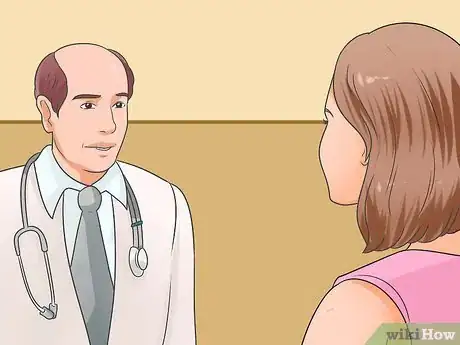
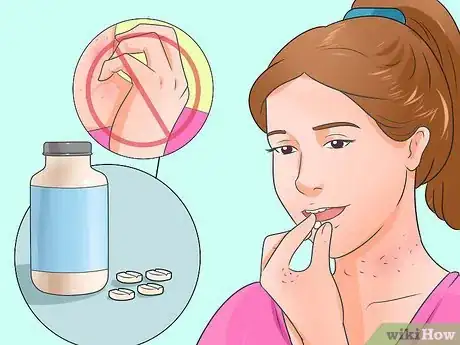
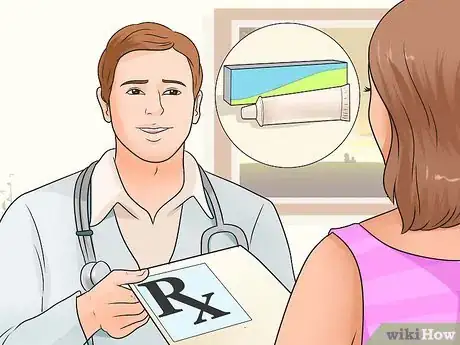






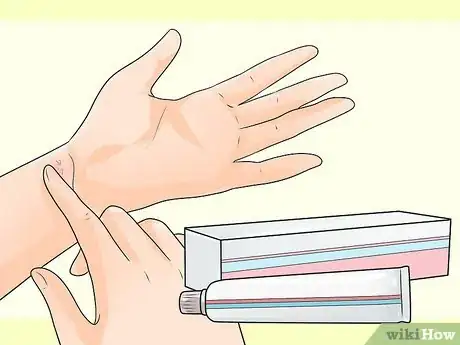
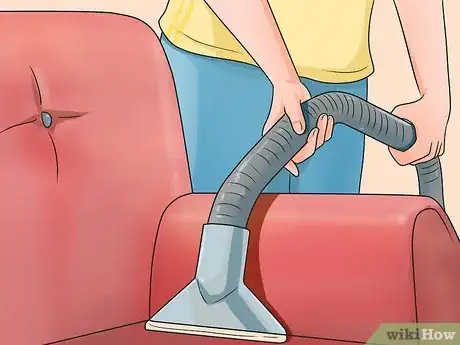
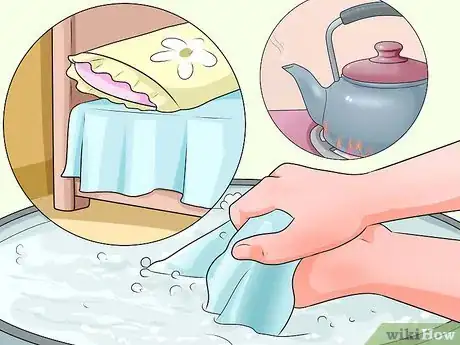
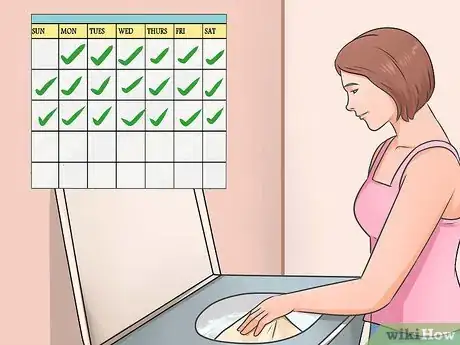

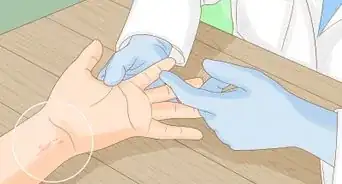


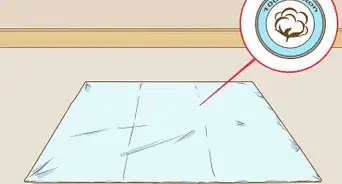


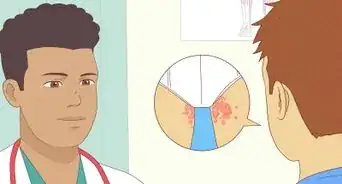



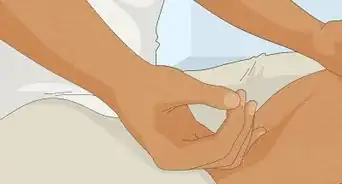












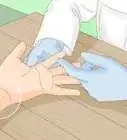


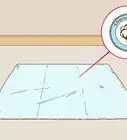



































Medical Disclaimer
The content of this article is not intended to be a substitute for professional medical advice, examination, diagnosis, or treatment. You should always contact your doctor or other qualified healthcare professional before starting, changing, or stopping any kind of health treatment.
Read More...